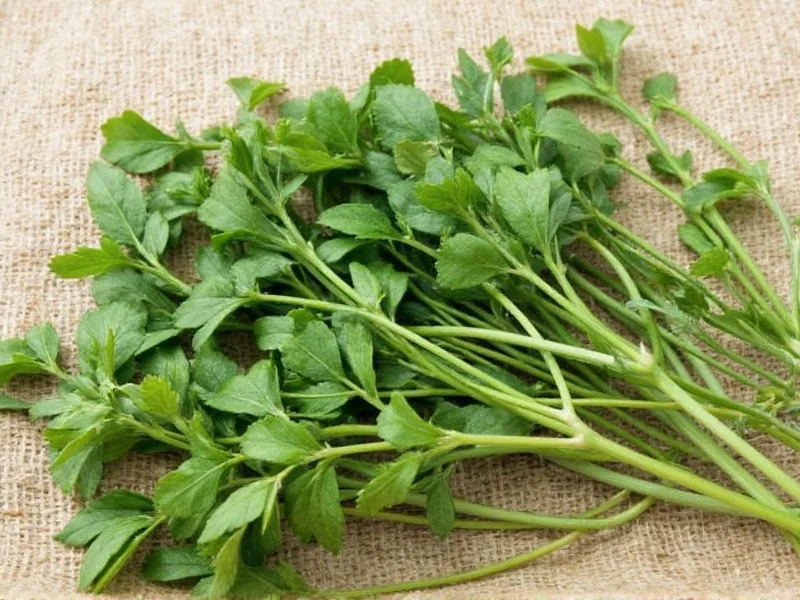Understanding how to use oregano herb properly transforms ordinary dishes into authentic Mediterranean culinary experiences. This versatile herb brings earthy, slightly peppery notes that enhance countless recipes when applied correctly. Whether you're working with fresh sprigs from your garden or dried leaves from your spice cabinet, mastering oregano usage elevates your cooking significantly.
Understanding Oregano Varieties and Their Unique Properties
Oregano isn't a one-size-fits-all herb. Different varieties offer distinct flavor profiles that work best in specific applications. Greek oregano delivers the strongest, most pungent flavor ideal for robust tomato sauces and grilled meats. Italian oregano provides a more balanced, slightly sweeter profile perfect for pizza and pasta dishes. Mexican oregano, while technically a different plant, offers citrusy notes that shine in bean dishes and salsas.
The choice between fresh and dried oregano significantly impacts your final dish. Fresh oregano contains volatile oils that provide bright, grassy notes but diminish with heat. Dried oregano concentrates certain compounds, creating a more intense, earthy flavor that withstands longer cooking times. When substituting between forms, remember that dried oregano is approximately three times more potent than fresh.
Optimal Culinary Applications for Oregano Herb
Mastering how to use oregano herb begins with understanding when to add it during the cooking process. For dried oregano, incorporate it during the early stages of cooking to allow its flavors to fully develop and integrate with other ingredients. This works particularly well in tomato-based sauces, soups, and stews where extended simmering time extracts maximum flavor.
Fresh oregano requires a different approach when learning how to use oregano herb effectively. Add fresh leaves during the final 5-10 minutes of cooking or as a garnish to preserve their delicate aromatic compounds. This technique works beautifully for finishing Greek salads, drizzling over roasted vegetables, or sprinkling on freshly baked pizza.
| Application | Dried Oregano Amount | Fresh Oregano Amount | Best Addition Time |
|---|---|---|---|
| Tomato Sauce (4 servings) | 1-1.5 tsp | 1-2 tbsp chopped | Dried: Beginning; Fresh: Last 5 min |
| Pizza (12-inch) | 1/2 tsp | 1 tsp chopped | Before baking (dried) or after (fresh) |
| Grilled Meats (per pound) | 3/4 tsp | 2 tbsp chopped | Marinate: Dried early; Fresh: After cooking |
| Vinaigrette (1 cup) | 1/4 tsp | 1 tbsp chopped | Just before serving |
Strategic Flavor Pairings for Oregano Usage
Knowing how to use oregano herb extends beyond measurement to understanding complementary flavors. Oregano forms the backbone of Mediterranean cuisine through its natural synergy with specific ingredients. The classic triumvirate of tomatoes, garlic, and olive oil creates the perfect canvas for oregano's earthy notes. When preparing Italian dishes, combine oregano with basil for balanced herbal complexity—use equal parts for pizza sauce, or slightly more oregano for heartier meat dishes.
For Greek applications, pair oregano with lemon juice, red wine vinegar, and extra virgin olive oil to create authentic dressings and marinades. The acidity brightens oregano's flavor while the oil carries its essential oils. When exploring how to use oregano herb in vegetable dishes, combine it with bell peppers, eggplant, and zucchini for traditional Greek or Italian preparations.
Advanced Techniques for Maximizing Oregano Flavor
Professional chefs employ specific techniques when learning how to use oregano herb to extract maximum flavor. For dried oregano, 'blooming' in hot oil before adding other ingredients releases its essential oils more effectively. Heat 1-2 teaspoons of olive oil, add dried oregano, and cook for 30-60 seconds until fragrant before proceeding with your recipe.
Creating oregano-infused oils provides versatile flavoring for multiple applications. Combine 1 cup of extra virgin olive oil with 3-4 sprigs of fresh oregano in a clean jar. Let sit at room temperature for 24-48 hours before straining. This oil works beautifully for dipping bread, finishing grilled meats, or enhancing salad dressings. For longer storage, refrigerate and use within two weeks.
Preservation Methods for Extended Oregano Usage
Proper storage significantly impacts how to use oregano herb effectively throughout the year. Dried oregano maintains peak flavor for 6-12 months when stored in an airtight container away from light and heat. Test potency by rubbing and smelling—a strong aroma indicates freshness.
For gardeners harvesting fresh oregano, two preservation methods stand out. Air drying preserves more flavor than oven drying: tie sprigs in small bundles and hang upside down in a warm, dark, well-ventilated area for 1-2 weeks. Alternatively, freeze whole sprigs in olive oil using ice cube trays for ready-to-use portions in cooking. Frozen oregano retains more volatile oils than dried versions, offering brighter flavor when added directly to dishes.
Common Oregano Usage Mistakes to Avoid
Many home cooks make critical errors when learning how to use oregano herb that diminish its potential. Overuse represents the most common mistake—oregano's strong flavor can easily dominate a dish. Start with smaller amounts and adjust after cooking, as flavors continue developing off-heat.
Adding fresh oregano too early in the cooking process wastes its delicate top notes. Unlike hardy herbs like rosemary, oregano's volatile compounds evaporate quickly with prolonged heat exposure. Similarly, using dried oregano in cold applications like salads or fresh salsas results in unpleasant texture and underdeveloped flavor. Always match the oregano form to the application for optimal results.
Creative Applications Beyond Traditional Cooking
Expanding your understanding of how to use oregano herb reveals unexpected applications. Oregano vinegar adds complexity to salad dressings and marinades—steep 1/4 cup fresh oregano in 1 cup warm vinegar for 24 hours, then strain. For herbal teas, combine oregano with thyme and honey for a soothing beverage (note: consult healthcare providers regarding medicinal uses).
Gardeners can utilize oregano beyond the kitchen. Planting oregano near vegetables like tomatoes and peppers may help repel certain pests while attracting beneficial insects. The flowers provide nectar for pollinators, and crushed leaves can serve as a natural insect repellent when applied to skin (perform patch test first).











 浙公网安备
33010002000092号
浙公网安备
33010002000092号 浙B2-20120091-4
浙B2-20120091-4